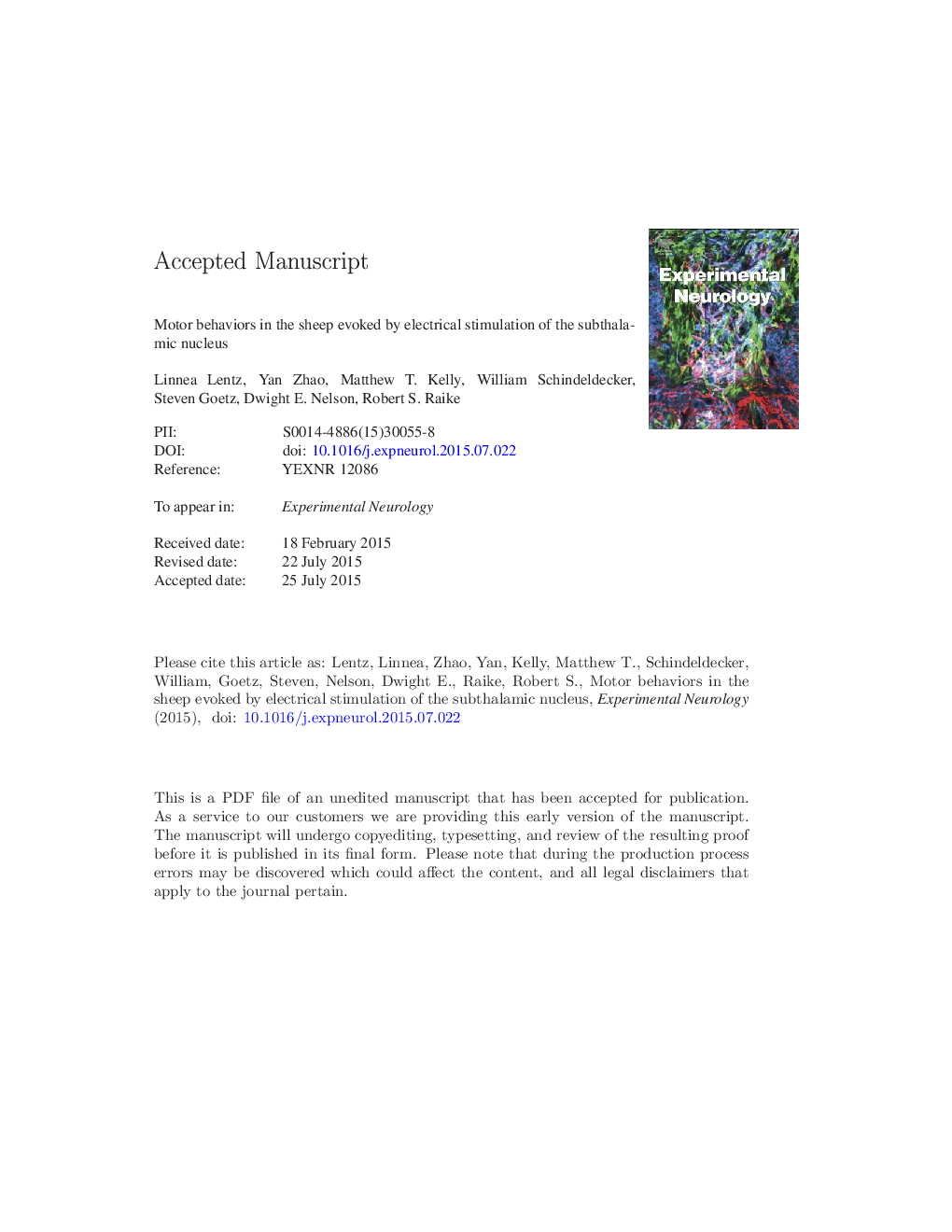| Article ID | Journal | Published Year | Pages | File Type |
|---|---|---|---|---|
| 6017347 | Experimental Neurology | 2015 | 49 Pages |
Abstract
Deep brain stimulation (DBS) of the subthalamic nucleus (STN) is used to treat movement disorders, including advanced Parkinson's disease (PD). The pathogenesis of PD and the therapeutic mechanisms of DBS are not well understood. Large animal models are essential for investigating the mechanisms of PD and DBS. The purpose of this study was to develop a novel sheep model of STN DBS and quantify the stimulation-evoked motor behaviors. To do so, a large sample of animals was chronically-implanted with commercial DBS systems. Neuroimaging and histology revealed that the DBS leads were implanted accurately relative to the neurosurgical plan and also precisely relative to the STN. It was also possible to repeatedly conduct controlled evaluations of stimulation-evoked motor behavior in the awake-state. The evoked motor responses depended on the neuroanatomical location of the electrode contact selected for stimulation, as contacts proximal to the STN evoked movements at significantly lower voltages. Tissue stimulation modeling demonstrated that selecting any of the contacts stimulated the STN, whereas selecting the relatively distal contacts often also stimulated thalamus but only the distal-most contact stimulated internal capsule. The types of evoked motor behaviors were specific to the stimulation frequency, as low but not high frequencies consistently evoked movements resembling human tremor or dyskinesia. Electromyography confirmed that the muscle activity underlying the tremor-like movements in the sheep was consistent with human tremor. Overall, this work establishes that the sheep is a viable a large-animal platform for controlled testing of STN DBS with objective motor outcomes. Moreover, the results support the hypothesis that exaggerated low-frequency activity within individual nodes of the motor network can drive symptoms of human movement disorders, including tremor and dyskinesia.
Keywords
Related Topics
Life Sciences
Neuroscience
Neurology
Authors
Linnea Lentz, Yan Zhao, Matthew T. Kelly, William Schindeldecker, Steven Goetz, Dwight E. Nelson, Robert S. Raike,
